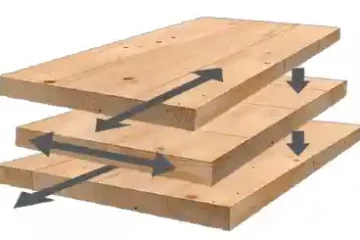Use of concrete in architecture
The design of concrete structures in public buildings is the subject to be discussed in this article. The use of reinforced concrete in architecture It allows an infinity of constructive solutions that allow the realization of large open spaces that are very useful in public buildings and whose resolution would be more complex and more expensive without it.
Geometry versus technology
Geometry has traditionally been used to cover large spaces. The oldest form is the dome. In this way, large lights could be covered by materials that worked under compression, such as stone or brick. Of these we have numerous examples from the Pantheon of Agrippa to the Taj Mahal.
The problem with using geometry to transmit loads exclusively in compression is buckling. Since once the material of the dome or vault leaves the load transmission line, the material stops working in compression to work in tension and consequently the structure collapses.


Despite these drawbacks, geometry is still used today to cover spaces in some unique structures. Although the system is more expensive to use than working with reinforced concrete. However, it has a great spatial richness that allows this way of projecting the structures to be maintained.
It should be noted at this point the geodesic domes, which are part of a geodesic sphere, a polyhedron generated from an icosahedron or a dodecahedron, which covers the envelope of a sphere.
Richard Buckminster Fuller He is considered the inventor of geodesic domes, being the one who registered his patent in 1954. Fuller worked on this concept in the 1940s, creating one of the best known geodesic domes in the world. Montreal Universal Exposition 1967. Reaching the dome dimensions of 76 m in diameter and 41.5 m in height.

On the opposite side to the exclusive use of geometry we have a large number of unique structures that seek to make the most of concrete in architecture, exploring its technical possibilities and taking them to the maximum.
Gantry System:
On the other hand, moving away from the singular concrete solutions in architecture, we have the structures in trays that are organized by porches, in the case that they are formed by pillars and beams. And screens in the event that they are made up of reinforced concrete walls. Screens are a very useful element in high-rise buildings to stiffen the whole. Or in the case of an earthquake, they serve to withstand torsional stresses that could collapse the pillars.
In short, to support large spans in a reinforced concrete structure through the system of frames or screens, three solutions are usually taken:
The simplest is to extend the depth of the slab, if you want a slab that covers large spans it is the simplest, although to avoid the problem derived from a slab of great weight, edge beams or waffle slabs are used to lighten it. This is the most widely used system, as it allows spans from 10 to 12 meters and is the most affordable.
Another option is to use hollow core slabs. Cellular slabs are prestressed and lightened slabs executed in a factory, so this system is included in precast reinforced concrete. It is a more expensive system than the exterior, although it allows spans of up to 15 meters with a rather reduced slab edge, from 16cm to 50cm.
The last option is the execution of prestressed floors. These work by tensioning the armor after the forging is performed. Which allows lights up to 15 meters.
Buildings in height:
As a building grows in height, the forces due to wind and buckling gain more prominence. Since the movement of the building must be prevented from being perceptible by its occupants. To solve all this, porches and screens are combined. There are several ways to solve the buckling problem. The first is the central core system, which acts as a column, counteracting lateral stress with the mass of the central core. There are also the core and display systems. In these cases, the resistance to lateral stress increases when the screens are added, since the combination of both makes it possible to minimize the deformations of the building. An example of this is the Seagram building in New York, which uses screens and intermediate porches so there are no pillars in the facade.

In order to continue climbing in height, bridge systems are used, which stiffen the outer tube by triangulation, which opposes resistance to buckling. And the strongest of all is the tube-in-tube system which has two concentric cores to resist lateral stresses.



0 Comments